Contents
- General information
- Myths, legends, and superstitions
- Botanical and varietal features of physalis
- Types and varieties of physalis
- Berry varieties of physalis
- Physalis care tips
- Fertilizers for physalis are fairly standard
- Temperature and illumination
- Watering physalis
- Transferring physalis
- Pruning
- Wintering
- Physalis reproduction methods
- Possible problems
- Useful properties and contraindications
- Beneficial features
- Physalis contraindications
- Physalis application area
- Physalis recipes
- Caviar
When autumn comes, the gardens look like watercolors, where someone has poured sunny red, yellow, and orange paints thanks to physalis. Sparks and strokes adorn everything – trees, bushes, and even grass. Firstly, physalis is a full-fledged participant in the orange-yellow extravaganza – a beautiful plant that seems to glow with brightness and is very similar to Chinese lanterns.
By the way, very few people know that the stress should fall on the first syllable – Physalis because the Latin scientific name of the plant is Phýsalis. But people often call it earthen cranberries or emerald berries. Indeed, having a round form this green “berry,” after-ripening acquires various shades, it is enclosed in a bright shell similar to a faceted bubble. It is interesting that the Latin name of Physalis is translated and means “bubble.”
General information
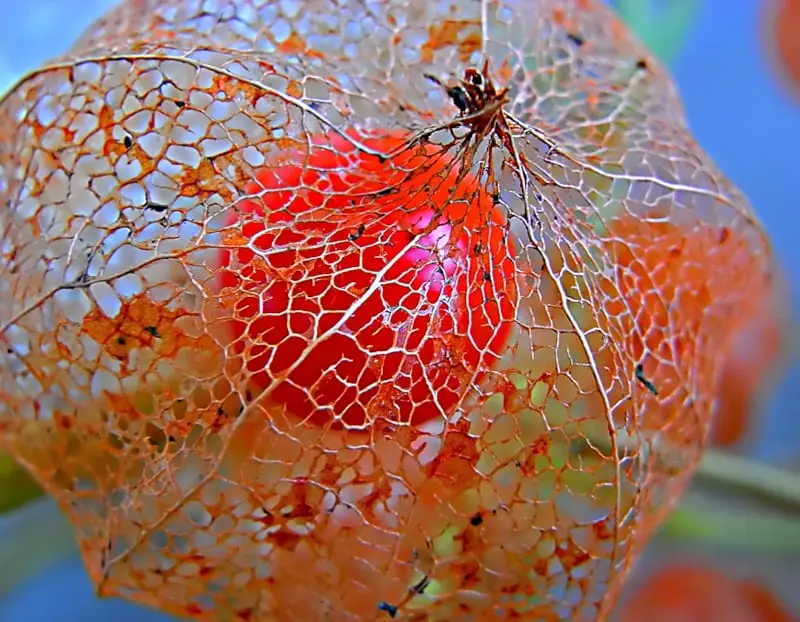
The genus Physalis (Phýsalis) belongs to the family of Solanaceae (nightshade), to the same family scientists – taxonomists include tomatoes, potatoes, eggplant, datura, and henbane. However, this orange “bubble” is a giant among the rest; its stem is even capable of lignification. It differs from other members of the family with its unique, beautiful pericarp. Like a luminous flashlight, this box is a cover formed by the fused sepals of the former flower.
Wonderful and original appearance, the ability to use it as a vegetable plant and even serve it to guests as a fruit dessert, decorativeness until late autumn – everything is great about physalis.
Above all bubble grass comes from South and Central America; quite a lot of it grows in Peru, Colombia; physalis is also growing as a crop in Mexico, Guatemala, Venezuela. Since the plant is very thermophilic, it feels more comfortable in warm regions, developing more and more new varieties with improved characteristics.
Myths, legends, and superstitions
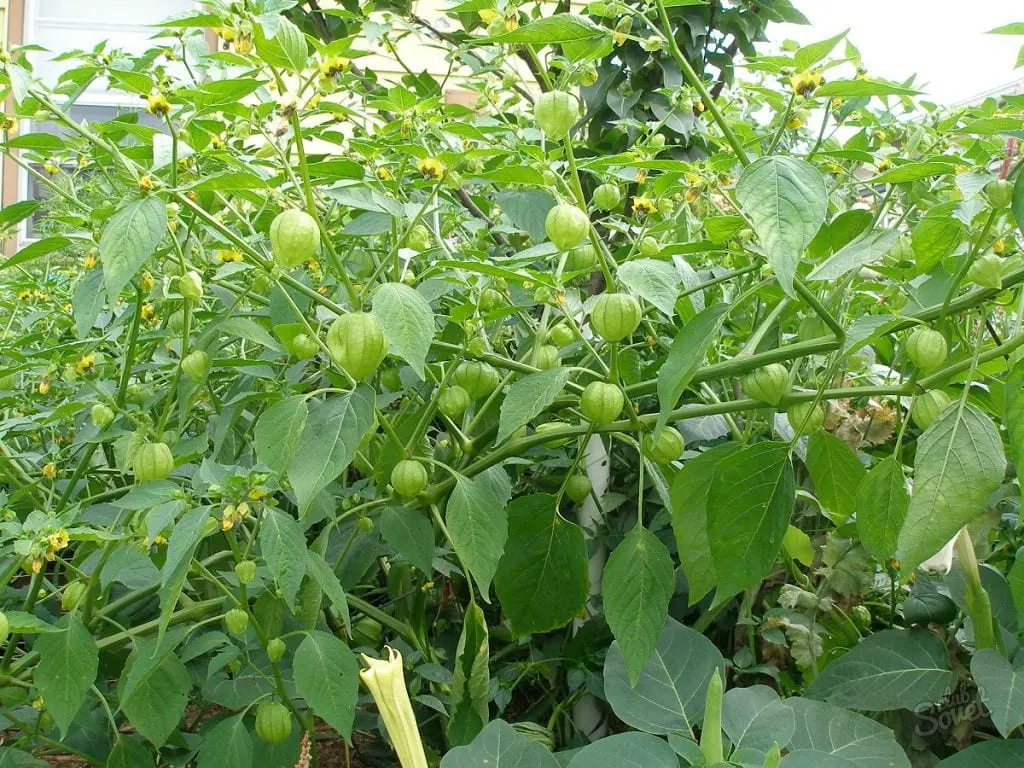
Physalis is legendary. Here is one of the legends:
The world has not always been dominated by light. Once, a terrible thing happened – the beautiful Sun disappeared in the Dragon’s gut. Darkness fell to the ground; death gained reign. Life stopped; all living things hid, those who did not have time – died, emptiness swallowed the world. But there was a man who decided to defeat the terrible Creature, free the Sun and return Joy and Light. He went to the Dragon with empty hands and only lit his path with a small flashlight.
The struggle was terrible, mountains and rivers groaned, but Evil should always be punished. And the Dragon fell, releasing the Sun from its depths. It flared up like a huge fire, reflected in a small lantern dropped by the Brave, and multiplying a hundredfold, the Light scattered over the grass, turning into an unprecedented number of glowing lanterns. Physalis was born.
It is the seeds of the plant that have powerful energy. If you hold them in your hand, make the most cherished wish, and then plant them – then everything will definitely come true. But when physalis rises and begins to rise, it will attract good people, for young women – betrothed, benevolence and goodness will reign in the house.
However, to get a positive effect, you should correctly position physalis. In dark, closed corners, the flower can lose its energy; it is better to place it in the sun.
The dry “lanterns” on the windowsill or hanging over the door will protect the house from evil.
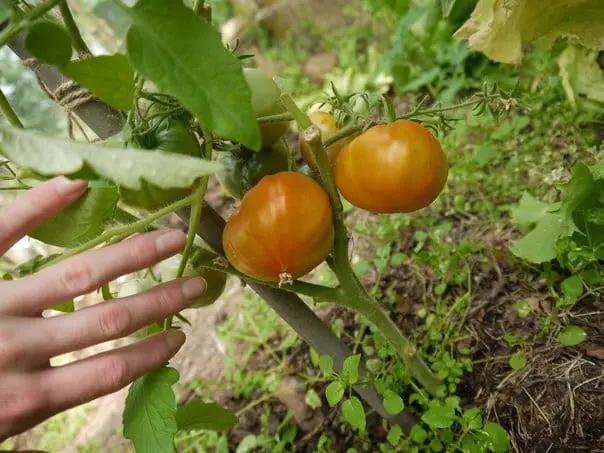
Botanical and varietal features of physalis
Vegetable
Descended from a fairly hardy, cold-resistant Mexican species. It has a highly branching stem with elongated yellowish, purple, or green leaves. The fruits of this physalis are huge, with different shades; depending on the variety, the mass reaches 80 g. To eat them, it is better to remove the plaque.
Strawberry
Another name for the variety is a berry. Originally it comes from South Africa. Fruits are not very large, up to 10 g, but sweet, with even some strawberry taste, without bitterness, beautiful yellow or orange color.
Decorative
Most often, it’s growing in summer cottages, and people are using it as an autumn decoration of flower beds. It can be high or low, decorated with white, blue, and even red bellflowers. But the most decorative it becomes closer to autumn – you cannot take your eyes off the graceful stems with multi-colored (often bright orange) lanterns.
Types and varieties of physalis

Vegetable varieties
As mentioned above, physalis is growing as a vegetable plant. For example, in Mexico, people use tomatoes like we are used to, add them to meat dishes, and prepare stews. We will find out below when reviewing the species and varieties to distinguish edible and inedible physalis.
Gribovsky
One of the most common varieties, and it’s growing outdoors. It has sour, light green fruits, very similar to tomatoes. The taste is also similar, slightly sour. Differs in cold resistance and abundance of fruiting.
Physalis Kinglet
Tall (up to 80 cm), erect bush, with light green leaves and low flowers. The fruits are large, sweet, and sour, suitable for pickling; you can even make homemade wine from them. Very yielding – up to 5 kg per bush. An early ripening cold-resistant variety is recommended for growing in the conditions of the Middle Lane.
Physalis Tomatillo
Differs in an interesting spicy taste of greenish fruits. It is good in cooking (for preparations and canning, making sauces, it is in perfect harmony with sweet peppers, basil, cilantro). Early enough (up to 95 days after germination).
The variety gives an early ripe harvest. The fruit grows to a large size, beautiful yellow color, and it’s rather sweet. The application is extensive – you can cook both confectionery (filling for pies, marmalade), and pickles, salads.
Berry varieties of physalis
Strawberry
A tall, beautiful plant that reaches a height of 75 cm. Fruits are small, pleasant in color (from yellow to amber), taste, and aroma of real strawberries. Used in cooking when preparing sweet dishes – this is a wonderful dessert, an excellent pair for ice cream. You can make jams and canning.
Columbus
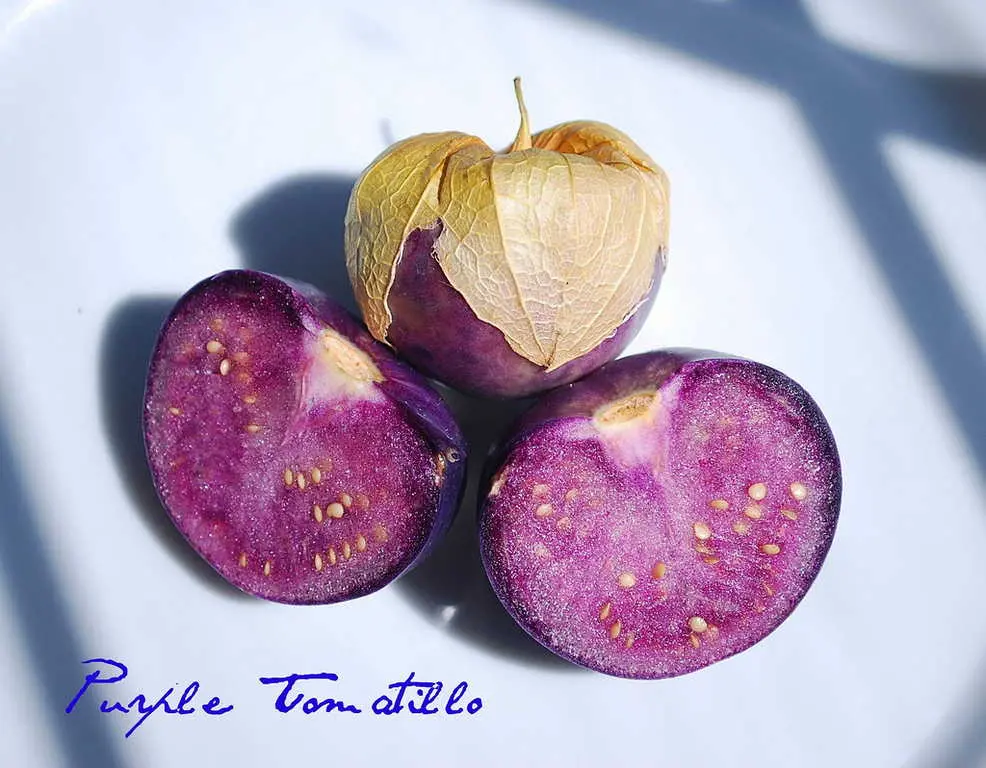
A thermophilic variety, it is recommended to grow in greenhouses. It ripens late but is famous for its high pectin content. Perfect for use as a fresh dessert, but versatile – people are using it for blanks too.
Raisin surprise
The variety is self-pollinated, very unpretentious (resistant to both cold and overheating), early maturing. Because of its strong pubescence, it has a second name – “pubescent.” After flowering with interesting yellow flowers, it forms many fruits with a pleasant taste. Despite the medium size (only 1.5-2 g), the berries are juicy, honeyed; they resemble pineapple in taste and aroma. The use is universal.
Decorative varieties of physalis
This variety of physalis also has many admirers; its “lanterns” in the garden look too festive. The only thing is that the fruits of this species’ varieties cannot be eaten – they are poisonous.
Physalis Franchet
A handsome plant growing up to a meter, with straight, slender stems, decorated with huge lanterns – up to 8 cm. A big plus is that Franchet is a perennial plant.
Physalis Alkekengi
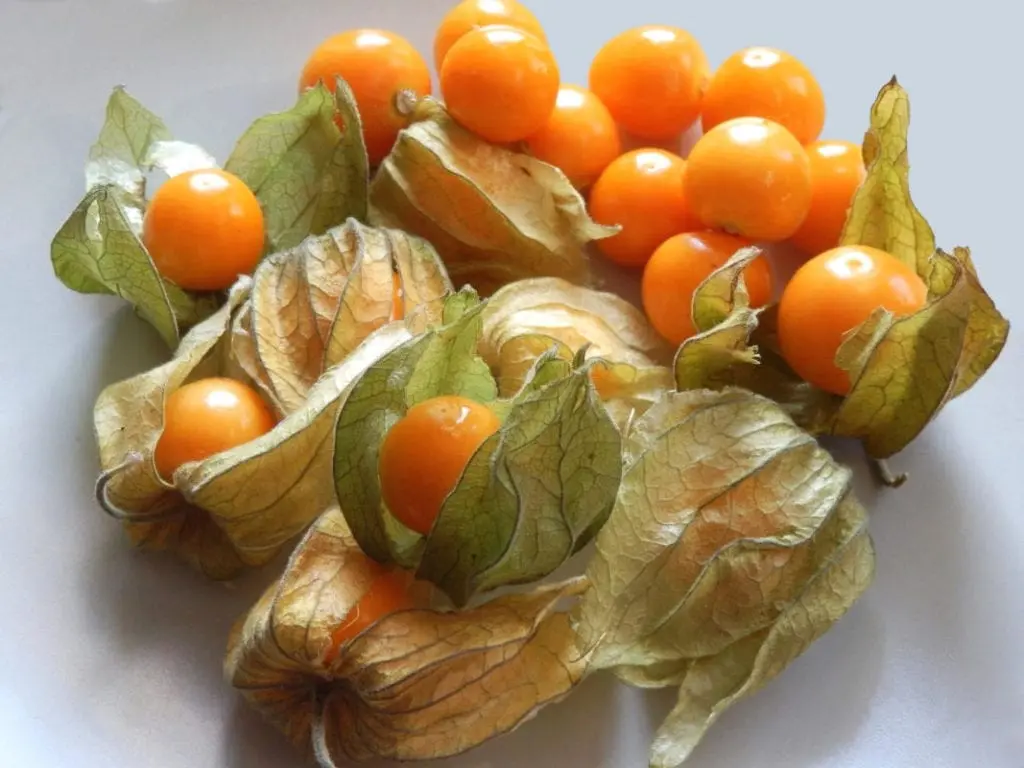
Also, a perennial, the stems are pubescent, has many medium-sized bright lanterns, literally showered the bush.
Physalis care tips
The difficulty in planting and caring for physalis depends on the variety. Perennial and annual varieties have very different requirements.
Planting physalis: when and how?
Annual physalis
It is growing from seeds. It is better to grow it by the seedling method in the middle lane and to the north. For this, somewhere in March, the seeds are soaking in “Epin” or sodium permanganate (for disinfection) for several hours, and in gauze or filter paper until roots appear, then going to the ground. In the southern regions, seeds can go directly into the ground. After the spring return frosts have finally passed, young plants are thinning out, considering the distance (at least 20-30 cm).
Perennial varieties
The key methods of growing perennial physalis are dividing the rhizome and grafting.
Division of the rhizome.
The procedure is good to do in spring and autumn, physalis is adaptable for such an intervention. In order to divide the bush, it is necessary, after removing the layer of earth, to divide the rhizome into 2-3 parts with a sharp shovel, select the divided part of the bush, and transplant it into a hole.
Water abundantly.
Cuttings. If you cut the tops of the shoots in the summer, you can get many plants with identical maternal properties. The cuttings must have at least 3 buds. After planting the cuttings in the soil so that a third of the shoot is in the soil and two-thirds on the surface, it is necessary to wait for rooting. To speed up the process, you can make a mini-greenhouse or cover the planted cuttings with plastic. After the gardener makes sure that rooting occurs, he removes the shelter – the greenhouse.
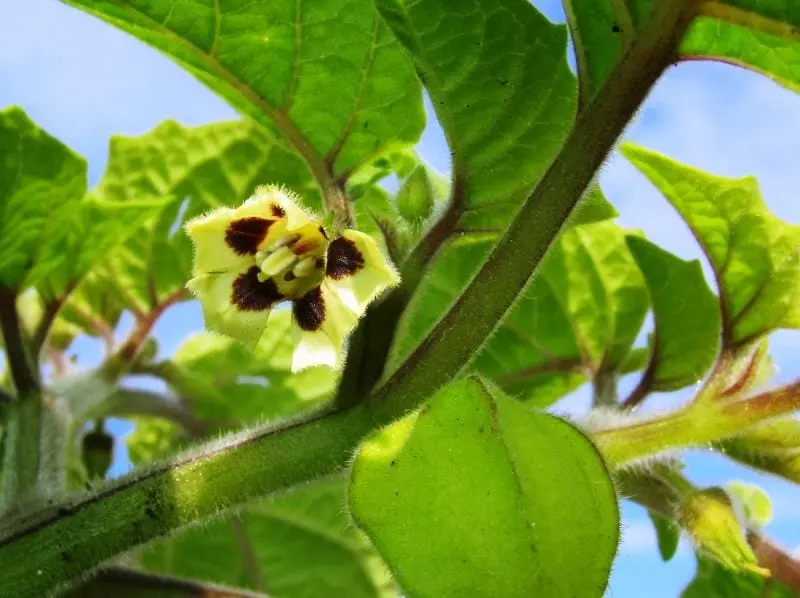
Fertilizers for physalis are fairly standard
With intensive growth and vegetation (in spring and early summer), the plant must be having powerful organic fertilizers of natural origin. Humus, compost, ash with small additions of industrial mineral fertilizers are well suited. Mullein and poultry manure solutions are good to use after fermentation and settling.
At the beginning of flowering – repeat the above scheme.
In the fall, after harvesting, it is good to enrich the plant with potassium and organic matter.
Temperature and illumination
Physalis is a warm and light-loving plant. If a gardener decides to plant physalis and get significant yields, then it is necessary to:
- plant it in the brightest places of the site, and mainly cold-resistant varieties;
- in severe frosts, cover with a specialized cloth, and, only with stable warming, it’s ok to remove it.
Watering physalis
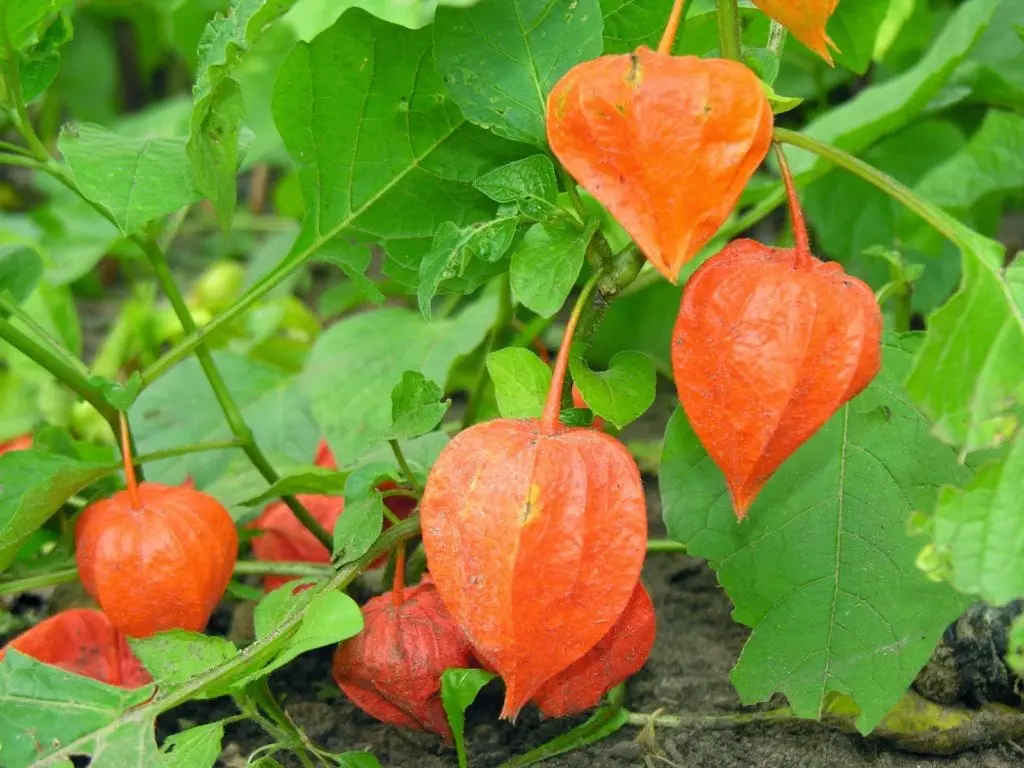
Watering – moderate and stable with settled water at room temperature. In summer, if the weather is not rainy, you can water it daily or every other day; on average, once a week is enough.
Ornamental varieties are much more loyal to the cultivation conditions, like any perennial crops grown in the Central lane. In other words their rhizomes can withstand adverse conditions, even not very long cold weather.
Transferring physalis
Once every 7-9 years, perennial physalis should get a renewal. For renewal, the rhizome is divided into 3-4 parts, and you should transfer it to the holes with fertile, loose soil. In addition planting is trampled and watered abundantly. It is good to do this procedure in the spring; it also leads to a good result in the fall. But the main thing is not to be late. The rhizome should take root in a new place, putting down new roots.
Pruning
It makes sense to trim only the perennial decorative physalis. Gardeners cut off the entire ground portion. The rhizome is slightly instilled and mulched.
Wintering
Perennial physalis winters well in the conditions of the Middle Belt and even to the north. Rhizome mulched after pruning; for peace of mind, you may cover it with spruce branches or non-woven material.
Physalis reproduction methods
Seeds
Seeds reproduce annual forms – vegetable and berry varieties. After germination, the seedlings dive, grow in room conditions or greenhouses. People are planting it in the ground with steady warming.
Layers
The method of propagation of decorative physalis by layering is simple and effective. To do this, in the spring, a part of the rhizome with new shoots is going in a new place.
Cuttings are made as mentioned above.
Possible problems

Physalis is an unpretentious plant with powerful immunity.
However, you should remember that it can suffer from fungal diseases, and from untimely ripening of fruits.
It also needs forming. To obtain a good harvest, the plant is formed by pinching the tops, since the more the main shoot branches, the more there will be places for laying fruit buds.
If the summer is unfavorable in terms of weather conditions, physalis is spud to increase resistance to diseases and improve the crop’s ripening.
Diseases and pests
Physalis is one of the strongest representatives of the Solanaceae, but it can get sick. Plant infections are mainly fungal and viral.
Mosaic
Physalis very quickly destroys; it literally “eats” the plant, like any viral infection. There is no cure; the affected individuals must be urgently destroyed. The garden looks sad; the bushes are dying, dotted with deep painful spots.
Late blight
The infamous nightshade fungal infection that can destroy all plants in just one night. Many means have been developed against this scourge (for example – Proton, Hom, Thanos). Unfortunately, the fungus infects the plant at the time of fruit ripening, and one has to weigh what is more profitable for the gardener – to use the processed fruit for food or to destroy the diseased specimen.
Among the pests, the most harmful are bears and wireworm. Fortunately, they can be dealt with using folk methods. For example, add wood ash or bird droppings to the soil.
Useful properties and contraindications
Composition, nutritional value, calorie content
Any physalis fruit, vegetable or berry, contains a lot of vitamins and microelements. A huge amount of vitamin C, vitamin A (14% of the daily dose required for the body), antioxidants, and a unique B vitamins composition make the plant indispensable in medical nutrition. Besides, the physalis fruits are low in calories; therefore, they can be used in diets for metabolic disorders, accompanied by excess weight. Let’s take a closer look at what benefits and harms this plant brings.
Beneficial features
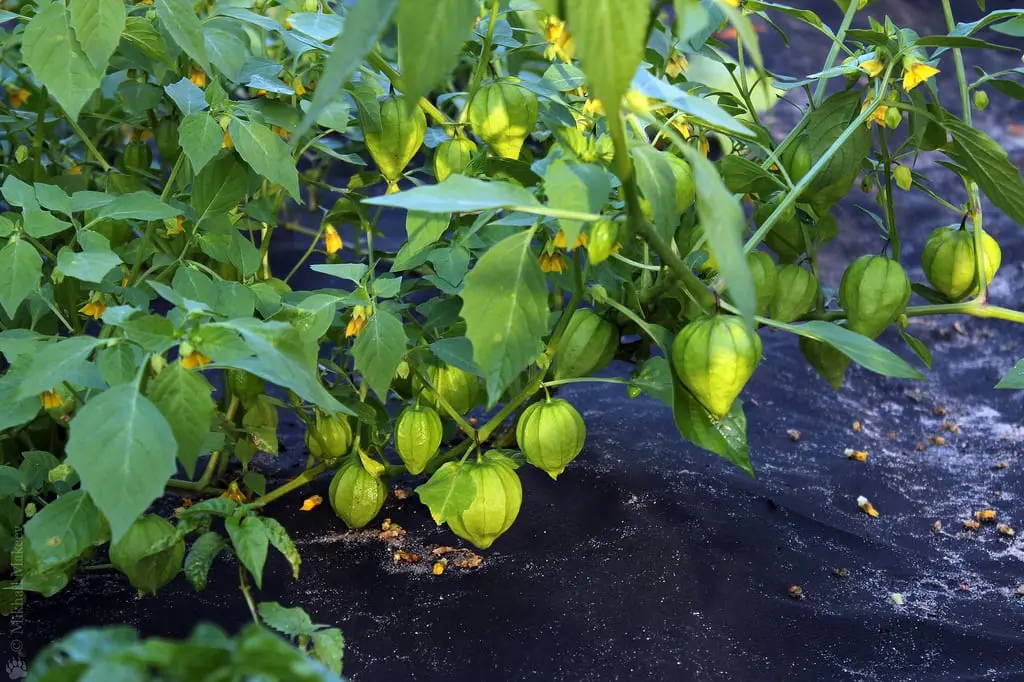
To illustrate the beneficial properties of physalis, one can cite the opinion of the famous folk healers:
- stones in the kidneys and bladder – a decoction of the fruit inside;
- gout and edema – a decoction of the fruit externally;
- purulent inflammation – juice or infusion. Fresh berries can be used;
- for pain in the stomach and intestines – fresh fruit puree;
- for dermatitis – physalis ointment (fruit ash mixed with vegetable oils).
Physalis contraindications
There are no special contraindications to the use of physalis. However, one must remember that, like any sour fruit, it can exacerbate patients with gastritis. It is also necessary to exercise caution in patients with pancreatic and gallbladder insufficiency. Lovely varieties should limit people with diabetes in their menu.
Physalis application area
As mentioned above, the scope is wide enough. You can use decoctions for influenza, laryngitis, lung diseases. Low-calorie desserts are good for dieters.
Decoction
Place 30 g of dried fruits in 0.5 l of water and cook for five minutes. Apply the resulting dose within two days for kidney and bladder diseases.
Ointment
The dried fruits (100 g) are burned in an open flame until ash is obtained. Grind and sift the ashes. Mix with a little olive oil until you get the consistency of an ointment. Use for healing wounds, cracks, and dermatitis.

Physalis recipes
Salty
For 1 kg of workpiece:
- Fruits – 1 kg;
- Dill – 50 g;
- Horseradish root – to taste;
- Garlic – 2 cloves;
- Hot pepper to taste;
- Salt – 50-60 g;
- Currant leaf – 5-7 pcs.;
- Tarragon – several branches;
- Cilantro – 7-10 seeds;
- Water – 1 liter.
Peel the fruits, rinse, place in sterilized jars. Prepare the brine – boil all the spices and salt in a liter of water. Pour everything with brine, place the grated garlic there. Leave the jars in a warm place for a week. Check fermentation progress daily. When the brine turns sour, drain it and boil it several times. Pour the contents of the jars with boiling brine, roll up, wrap. Store in a cool place.
Caviar
- Physalis fruits – 1 kg;
- Onions – 500 g;
- Carrots – 500 g;
- Parsley root – 200-300 g;
- Salt to taste;
- Sugar to taste;
- Garlic – 3 cloves;
- Ground black pepper -1/2 teaspoon.
Firstly, prepare all vegetables and fry in vegetable oil. Put everything in a container, add the rest of the ingredients, simmer. Grind with a blender, cool. Serve with meat or poultry.
In conclusion – Physalis, a wonderful plant, is not widely distributed and completely undeserved. But every lover of beauty, if dares to plant a wonderful “bubble” of physalis, will certainly be rewarded for the work on its cultivation with the chic glow of Chinese lanterns on cloudy autumn days, the wonderful aroma of exotic jam and spicy pickles that stimulate the appetite.
More tips on how to eat physalis in the video below:










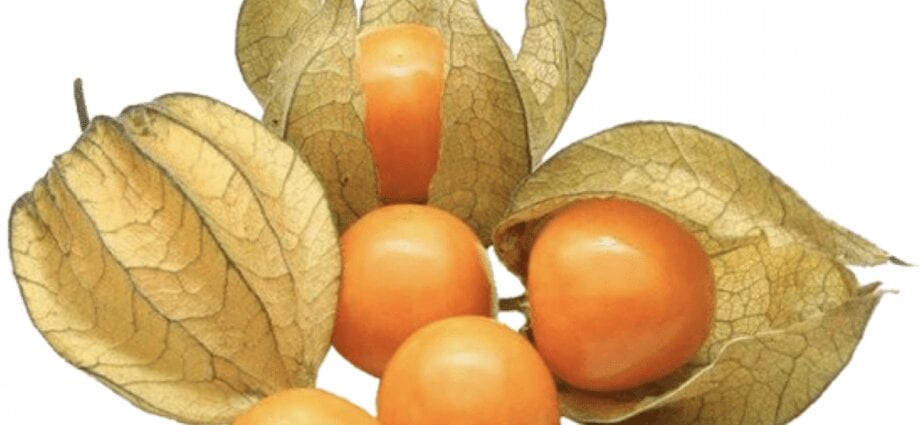
news have a peek at this site website here Full Article like it browse around these guys find more have a
peek at these guys visit this site right here check out this site Going Here read
this article click for more browse around
this web-site see post
I was suggested this website via my cousin. I am no longer positive whether this publish is written by means of him as nobody else recognize such unique approximately my difficulty.
You’re wonderful! Thank you! Feel free to visit my blog – viagra buy
great post to read check out this site visit this site
check this site out Your Domain Name Recommended
Reading click reference pop over to this website have a peek at this website try this site go to this
website try this out hop over to this site find this
try here